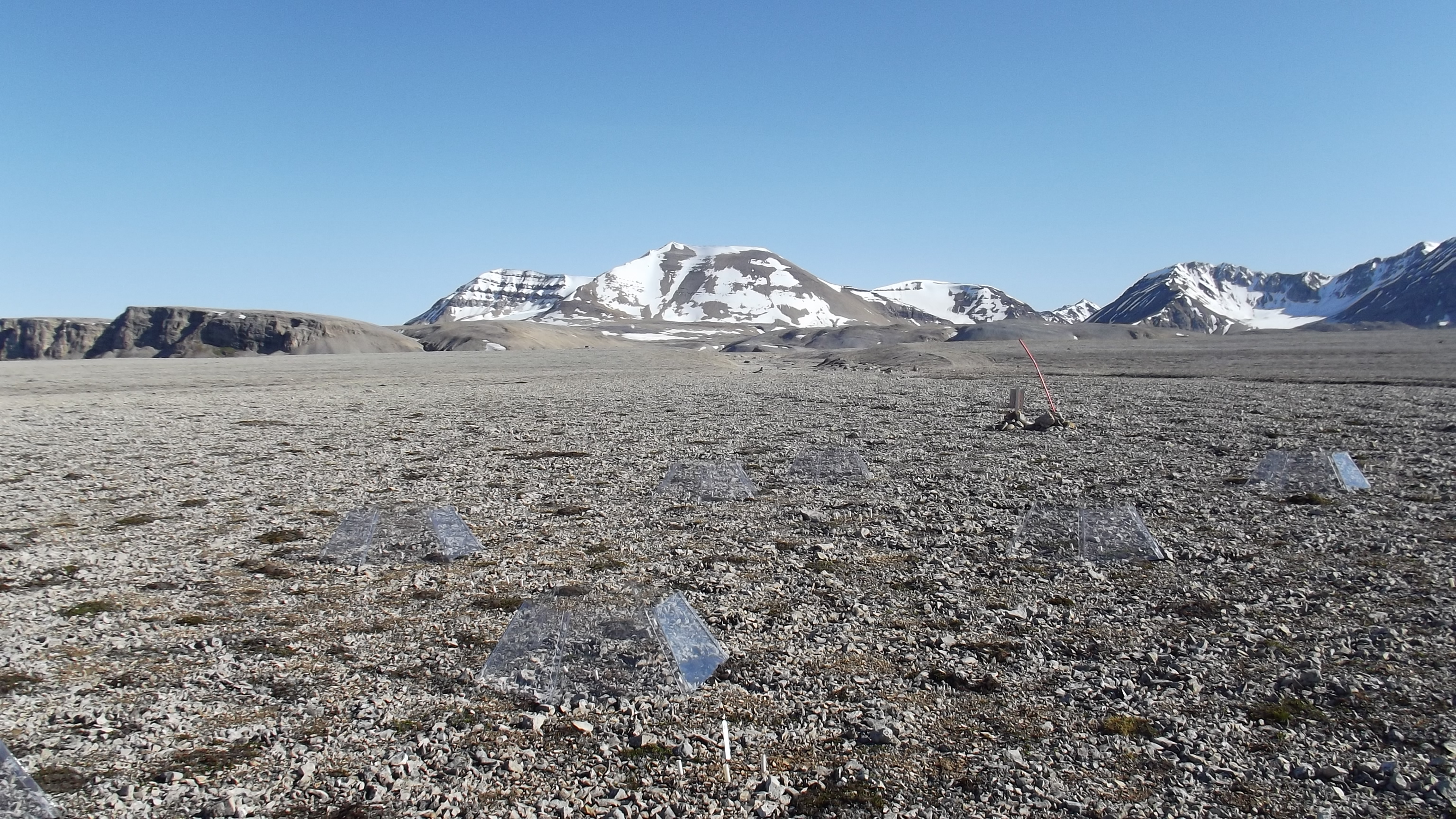The REMUS experiment, which measured the effects of warming and irrigation on High Arctic plants, lichens and soil microbes, was set up in September 2014 at Kongsfjordneset on Brøggerhalvøya, Svalbard (78° 58.002’ N, 11° 28.446’ E).
Forty eight plots were established in three blocks over frost boils colonised by soil crusts and the vascular plant species Salix polaris, Bistorta vivipara and Saxifraga oppositifolia. Warming was applied using hexagonal ITEX chambers of 1.2 m basal diameter, which elevated annual mean and summertime soil temperatures by 0.6 °C and 1 °C, respectively, and the frost boils were irrigated twice each summer with deionised water. Warming and irrigation were applied in factorial combination to the boils, resulting in four treatment groups. Loggers buried in soil recorded temperatures every hour.
After four years of treatment, warming increased the flux of carbon dioxide emitted from soil by microbes by 44%, but also increased the consumption of methane by soil methanotrophic bacteria by 78%. Higher cover of S. polaris was apparent in warmed plots after several years of treatment, with warming also leading to increased numbers and biomass of B. vivipara individuals. In a collaboration with the Universities of Ghent, Bangor and Edinburgh, B. vivipara plants were sampled in September 2024 in order to determine whether microbes forming symbioses with roots are responsible for the improved growth of the plant species. Staff at Edinburgh University have also shown warming to cause bleaching and physiological deterioration of the lichen Cetrariella delisei, and those at the University of Ghent and the Swiss Federal Research Institute are currently investigating the relationships between greenhouse gas fluxes and the abundance and gene expression of soil microbes.
Congruent with long-term measurements elsewhere on Brøggerhalvøya, mean soil temperature in unchambered plots in the REMUS experiment rose by ~1 °C between 2014 and 2024. Given this rapid increase in temperature, substantial changes to High Arctic soils, including altered greenhouse gas fluxes, plant biomass, lichen physiology and microbial activity, can be anticipated in the natural environment by the mid 2030s.
From 2025, the REMUS experiment will be managed by Dr Emanuele Pallozzi at the Research Institute on Terrestrial Ecosystems of the Italian National Research Council.
Dr Kevin Newsham talks about a changing Arctic
In this short film, produced by Elise Biersma, Dr Kevin Newsham, a soil and plant ecologist working at the British Antarctic Survey talks about his research on the response of soil microbes (REMUS) to warming in the Arctic. He studies these microbes using open top chambers in Ny-Alesund, Svalbard, an area experiencing unprecedented change. Kevin has been conducting this research since 2014, with 2024 being his last field season.
Related papers:

The REMUS experiment at Kongsfjordneset on Brøggerhalvøya.